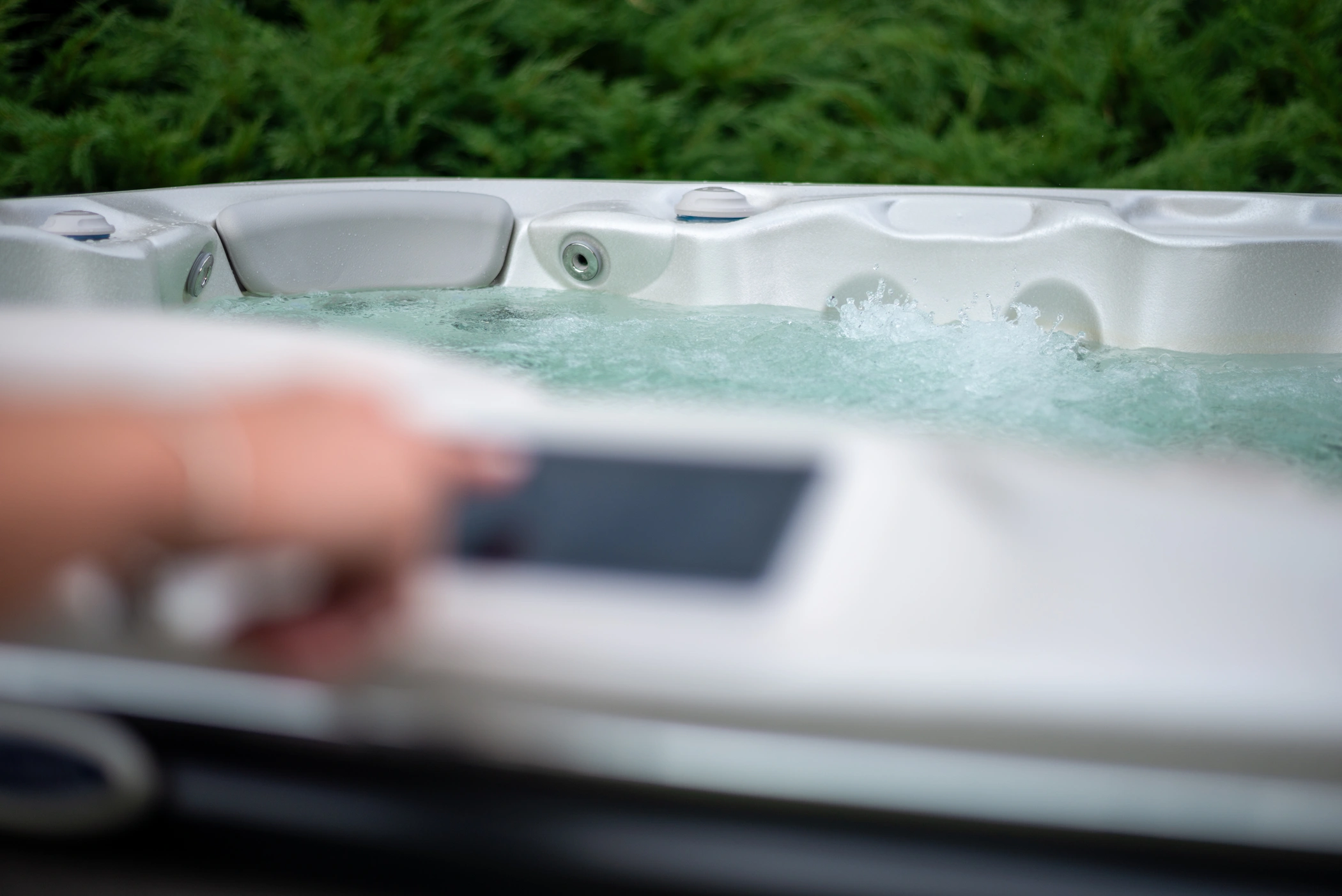Are Hot Tubs Expensive to Maintain Long Term?

If you’ve recently purchased or are considering purchasing a hot tub, one of the first things you might wonder is: “How much will it cost to maintain my hot tub in the long run?” While owning a hot tub can be a wonderful and relaxing experience, it does come with ongoing maintenance and associated costs. The good news is that with proper care and attention, the long-term costs of maintaining a hot tub can be manageable.
At Hydropool, we believe that our customers should have all the information they need to make informed decisions, not only when purchasing but also when it comes to the upkeep of their hot tubs. In this article, we’ll break down the various costs associated with maintaining a hot tub over the years, as well as some tips to help you keep those costs down.
Here’s what we’ll cover in this article:
- Factors That Affect Hot Tub Maintenance Costs
- Average Hot Tub Maintenance Costs
- Tips for Reducing Maintenance Costs
- How to Extend the Life of Your Hot Tub
Factors That Affect Hot Tub Maintenance Costs
While the initial purchase price of a hot tub is one thing to consider, the ongoing maintenance costs can fluctuate based on several factors. Here are the key elements that will determine how much you spend on hot tub maintenance:
1. Size and Model of the Hot Tub
The size and model of your hot tub will have a direct impact on the maintenance costs. Larger models with more features will typically require more maintenance in terms of chemicals, energy usage, and water care. For example, Hydropool's Self-Cleaning Hot Tubs are designed to reduce the need for frequent cleaning, but they still require periodic attention.
2. Water Chemistry
Maintaining proper water chemistry is crucial for the health of both the hot tub and its users. Regular testing of water and balancing pH, alkalinity, and sanitizer levels are essential to prevent damage to the equipment and ensure a safe and clean experience. This can involve regular use of chemicals such as chlorine or bromine, as well as other maintenance items like algaecides and clarifiers.
3. Energy Consumption
Hot tubs need power to run their pumps, heaters, and jets, and energy consumption is a significant ongoing cost. The energy efficiency of your hot tub model will affect how much you pay to operate it monthly. For example, Hydropool’s energy-efficient models like the Self-Cleaning Hot Tub Series are designed to consume less power and reduce long-term operational costs.
4. Weather Conditions
Your location and the weather can affect how often you need to use your hot tub, as well as the power required to keep it running. For example, colder climates might require more energy to maintain the water temperature, whereas warmer climates could reduce the amount of energy needed. Additionally, your hot tub’s insulation will play a role in how energy-efficient it is, so investing in a well-insulated model can reduce long-term maintenance costs.
5. Usage Frequency
The more frequently you use your hot tub, the more maintenance it will require. If you’re using your hot tub daily, you’ll need to change the water more often and use more chemicals to maintain water quality. In contrast, less frequent use may result in fewer maintenance needs.
6. Quality of Water
The quality of your local water supply also affects the maintenance of your hot tub. Hard water, which contains high levels of calcium and magnesium, can lead to scaling and reduce the lifespan of your hot tub’s equipment. You may need additional chemicals or a water softener system to counteract this issue.
Average Hot Tub Maintenance Costs
Now that we’ve looked at the factors affecting maintenance, let’s break down the average costs you can expect when it comes to long-term hot tub upkeep:
1. Water Care and Chemicals
The cost of water care supplies will typically run between $200 to $500 per year, depending on usage. This includes chlorine or bromine, pH and alkalinity adjusters, sanitizers, and other chemicals necessary to keep your hot tub in good condition.
2. Energy Costs
On average, you can expect to pay about $20 to $50 per month to run your hot tub, depending on the model and frequency of use. This translates to around $240 to $600 per year. Hydropool’s energy-efficient models, such as the Self-Cleaning Hot Tub Series, are designed to minimize energy consumption, which can help reduce these costs.
3. Water Changes
Water changes are necessary every 3 to 4 months to maintain water quality. Depending on the size of your tub, changing the water may cost between $50 to $150 per year, which includes the cost of new water and the time it takes to drain and refill the tub.
4. Maintenance Services
If you hire a professional to service your hot tub, it will cost around $100 to $300 per visit, depending on the scope of the service. Some owners prefer to perform basic maintenance tasks themselves, such as cleaning filters and checking water levels, but others opt for professional services for more extensive tasks, such as annual inspections.
5. Repairs and Replacement Parts
Occasionally, hot tub owners will need to replace worn-out parts, such as filters, pumps, or heaters. While this isn’t a regular expense, budgeting around $200 to $500 per year for repairs and replacement parts is a good idea, especially as your hot tub ages.
Tips for Reducing Maintenance Costs
While hot tubs require ongoing maintenance, there are ways to keep costs under control. Here are a few tips to help you reduce long-term maintenance costs:
1. Invest in an Energy-Efficient Model
Energy-efficient hot tubs are designed to minimize energy consumption, which will lower your monthly operating costs. Hydropool’s Self-Cleaning Hot Tub Series is a great example of a model that offers both energy efficiency and low maintenance.
2. Regularly Clean Filters
Keeping your filters clean and replacing them as needed can reduce the strain on your hot tub’s pumps and filters, which can lower repair and energy costs. Filters should be cleaned every 1–2 weeks, and replaced every 12–24 months, depending on usage.
3. Use a Cover
Using a high-quality, insulated cover can significantly reduce energy costs by preventing heat loss. This is particularly important in colder climates, where a good cover can make a significant difference in how much energy your hot tub consumes.
4. Follow the Manufacturer’s Maintenance Guidelines
Each hot tub model has its own specific maintenance requirements. Following the manufacturer’s guidelines for care and maintenance will not only keep your hot tub in top condition but will also help you avoid unnecessary repairs.
How to Extend the Life of Your Hot Tub
A well-maintained hot tub will last for many years, and proper upkeep can help you get the most out of your investment. Here are some tips to help extend the life of your hot tub:
- Maintain proper water chemistry to prevent damage to the tub’s surfaces and components.
- Keep the tub clean by regularly cleaning filters, the shell, and the waterline.
- Use a cover when the hot tub is not in use to protect it from debris and reduce heat loss.
- Perform regular inspections to check for any leaks, cracks, or equipment issues.
Are Hot Tubs Expensive to Maintain Long Term?
Maintaining a hot tub does come with some ongoing costs, but it doesn’t have to be expensive. On average, you can expect to spend $500 to $1,000 per year on maintenance, including water care, energy costs, water changes, and occasional repairs. By choosing an energy-efficient model, following maintenance guidelines, and using a high-quality cover, you can reduce long-term costs and keep your hot tub in great shape for years to come.
Still have questions? Reach out to your local Hydropool retailer here.






